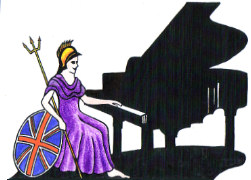Teachers, Accompanists and Piano Entertainers in the UK

UK Piano Page

Baptist Church
Wordsworth Rd
Stoke Newington, London N16 8DA
England
New and used sales,short and long term hire with
43 Botley Road
Oxford, Oxfordshire OX2 OBN
England
We are specialists retailer of traditional pianos
Rookery Farm
Radstock, Somerset BA3 4UL
England
Abbey Piano Services is run by a small team of
156 Hatfield Road
St Albans, Hertfordshire AL1 4TU
England
Selection of new and restored pianos always in
3 The Stables Lynx Park Business Centre
Colliers Green
Cranbrook, Kent TN17 2LR
England
We hire/rent sell and restore upright and grand
Music Festival for performers and guests Our 10th
18-06-2022 01:30PM
The Morecambe Bay Piano Group was set up to extend
11-12-2021 02:00PM
The Morecambe Bay Piano Group was set up to extend
08-01-2022 02:00PM
The Morecambe Bay Piano Group was set up to extend
12-02-2022 02:00PM